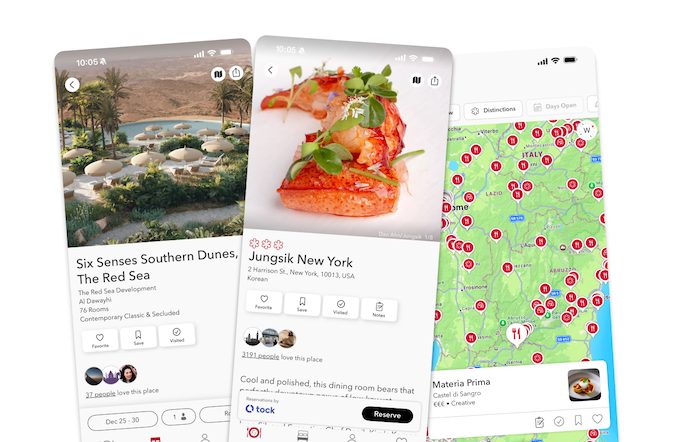I’ve been living in Venice for several years now — but by birthright, I remain a Veneta, not a Veneziana. A veneta is a Venetian of the greater region that includes Venice, the lands stretching many miles north, west, and south of the famous floating city. Veneziani — those from that historic archipelago — refer to any other part of the region as campagne.
In fact, some born-and-bred islanders would be perfectly comfortable calling the rest of the world campagne, or campo, or terraferma. The countryside. For this piece, we'll stick just to the region.
Still, the differences are significant. Being born on the mainland means I learned to drive a car and not a boat. I can bike, but not row. I didn’t grow up with the entire world of travelers stepping off planes, trains, and cruise ships and onto my doorstep. Living in the countryside of Venice for 20 years, I became a traveler myself.
From my home in a small rural village, I had plenty of reason to get out and learn everything my surroundings had to offer. I became a seeker of art, culture, architecture, history, nature and food. And I found, early on, that the campagne had plenty of attractions all its own.
To friends, family and readers around the world: I’m here to advocate for it.
Explore this guide:
On your next visit to Venice, I highly recommend reserving a few days to explore the region beyond the lagoon city and take in the diversity and richness of the area.
The best way to do it is by car: you can rent one right on Piazzale Roma. Within an hour’s drive, you’ll already feel a thousand years away from the palazzi and the shimmering canals.
The entire itinerary below is doable in several days, with each area about an hour’s drive from the next. It includes a wealth of history and art, small towns and hamlets, picturesque hills, thermal waters, and endless wining and dining.
For those with less time to spare, each place below is just an hour or two from Venice — perfect to visit on its own for an overnight or a day trip. Of course, my advice is to do it all. With such a breadth of flavors, ingredients and settings, you might wish to skip the city of Venice entirely. Or not.
But in the spots below, the campagne is no afterthought.
TREVISO AND THE PROSECCO HILLS
A series of peaceful towns in quick succession, and the world-famous home of Prosecco.
Just north of the flat plains, before the Alps rise steeply, lies a string of quiet towns that feel like a soft exhale after the traffic of Venice. Set against green, rolling hills and low mountains, each has its own distinct vibe.
You’ll first pass through Treviso — a smaller, gentler Venice with canals and painted palazzi, where locals still ride their bikes to market and the spritz flows freely. The town is full of excellent restaurants, from the Indonesian Feria to the creative cuisine of Pierre - Trattoria Sartoriale, and Le Beccherie, known as the birthplace of tiramisu.
From there, the road curves gently through vineyards planted with Glera — the grape used to make Prosecco — and the cypress-lined hills of the UNESCO-recognized Prosecco Hills of Conegliano and Valdobbiadene. The latter is a crown jewel for lovers of sparkling wine and long lunches. Stop at nearby Tre Noghere for traditional cuisine amidst the vineyards, Da Gigetto for classic regional dishes and a staggering wine list, or Le Cementine, a rustic, vintage-style country restaurant on the banks of the Sile River.
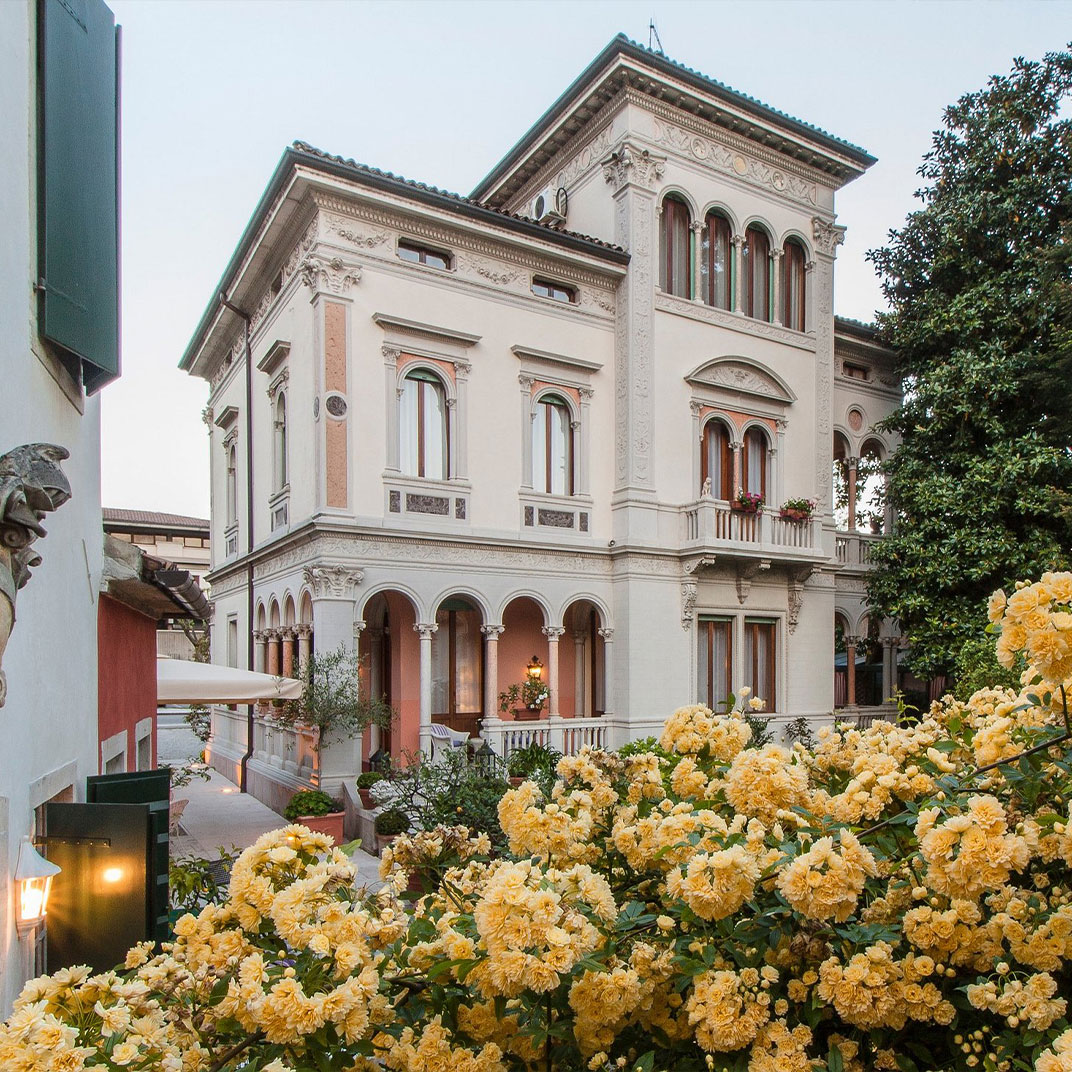
Forty-five minutes from Treviso — and still under a two-hour drive from Venice — you’ll hit the town of Follina, all moss-covered stone and silence, centered around an ancient abbey and time-worn fountains. Here is the region’s only hotel in The MICHELIN Guide selection, Villa Abbazia Relais & Chateaux — a charming, 17th-century building with bespoke guest rooms. On site, La Corte is a splendid modern restaurant that sources herbs from its own garden.
Stay the night, and you’re well within driving distance of several more of the area’s best small towns: Vittorio Veneto is an elegant hillside retreat where you can wander old lanes or hike into the foothills to visit relics of World War I; Cison di Valmarino is a party-favor of a tiny hamlet; and Conegliano offers its local take on the region’s famous Prosecco.
PADUA AND THE COLLI EUGANEI
A charming university town and small towns in the foothills of gentle volcanic slopes.
This is where the land gets softer again, folding gently into the low, volcanic hills just south of Padua — a university city that manages to feel both grand and lived-in, with Roman and medieval elements, a wealth of must-see frescoed buildings, arcaded and bikeable streets, and antique stores and vintage cafés spilling onto the cobblestones. The rich dining scene includes six MICHELIN Guide restaurants at the time of writing.
Just beyond the outskirts of the city lie the Colli Euganei hills, their gentle slopes covered in a patchwork of vineyards, olive groves and thermal springs. The small towns of Este and Monselice sit at their feet, both walled and quietly striking, with castles perched just high enough to double as scenic viewpoints. In Este, try Incàlmo for unfussy, well-prepared cuisine. In Monselice, go for La Torre for traditional classics.
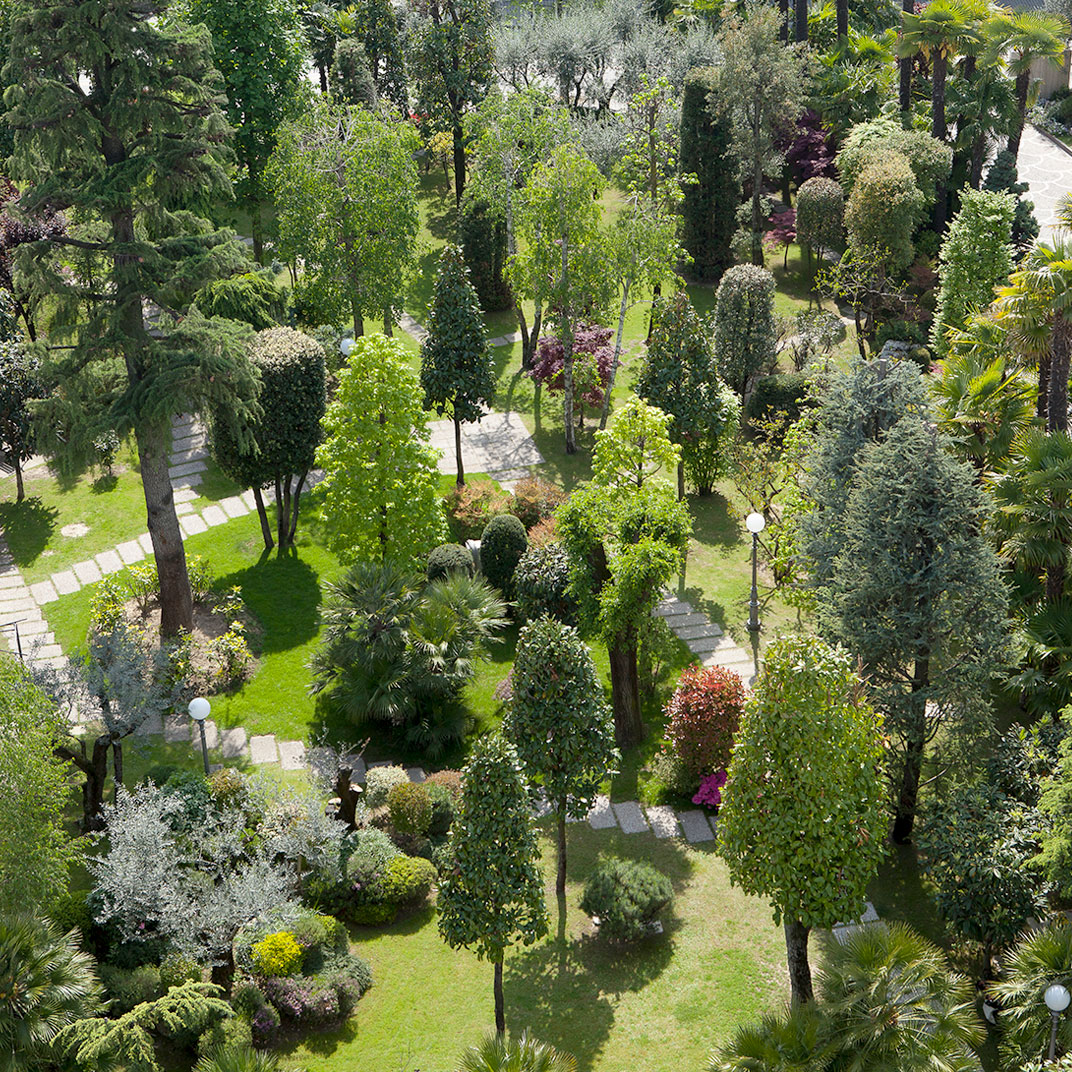
Two other MICHELIN Guide restaurants sit at the outskirts of the natural area that makes up the Colli Euganei park — Come in Corte Aurora and Aubergine — as well as several other sites worth a visit. Arquà Petrarca is a picture-book hilltop village where the famous 14th-century poet, Francesco Petrarca, once lived and where time seems to run at a different speed, while down in Valsanzibio, a Baroque garden stretches out like an unexpected mirage, full of fountains, boxwood mazes and mythological statues half-swallowed by greenery.
Then there’s Praglia Abbey, still active, still peaceful, where monks tend to manuscripts, gardens and vineyards alike, and still craft everything from cough drops to liqueur, tea and biscuits. After exploring Padua, this is the kind of place you come to for a day, then find reasons to linger — for the food gems, for the walking trails, for the silence.
At the center of all these points, between the city of Padua and the edge of the park, sit two MICHELIN Guide hotels: Abano Grand Hotel and Esplanade Tergesteo. The first is a classic grand hotel that appeals to thermal spa-goers with its own three pools; the latter is a wellness retreat that adds a Finnish sauna, Turkish bath, a wide range of beauty treatments, and multiple pools — including a rooftop one filled with saltwater.
VICENZA AND ITS COUNTRYSIDE
Andrea Palladio's architectural legacy spans both the city and the many villas of the surrounding hills.
Vicenza is Palladio’s city — the home of the seminal Renaissance architect Andrea Palladio, whose namesake style is all symmetry, stone, and classical elegance. Even the proportions of the streets feel intentional, and it’s a place where everyday life feels stately.
Think: morning markets under Renaissance arches, aperitivi in sunlit central piazzas, and — in the background — the stunning silhouette of the Palladian Basilica. Not a church, despite the name, but a building originally constructed for government affairs, now a multifaceted public space that hosts major art exhibitions. Just outside is the Teatro Olimpico, with the incredible optical illusion of its trompe-l'œil stage, and the One-Star restaurant Matteo Grandi in Basilica. A short drive away is another MICHELIN Guide selection, Remo Villa Cariolato, set in a beautiful villa.
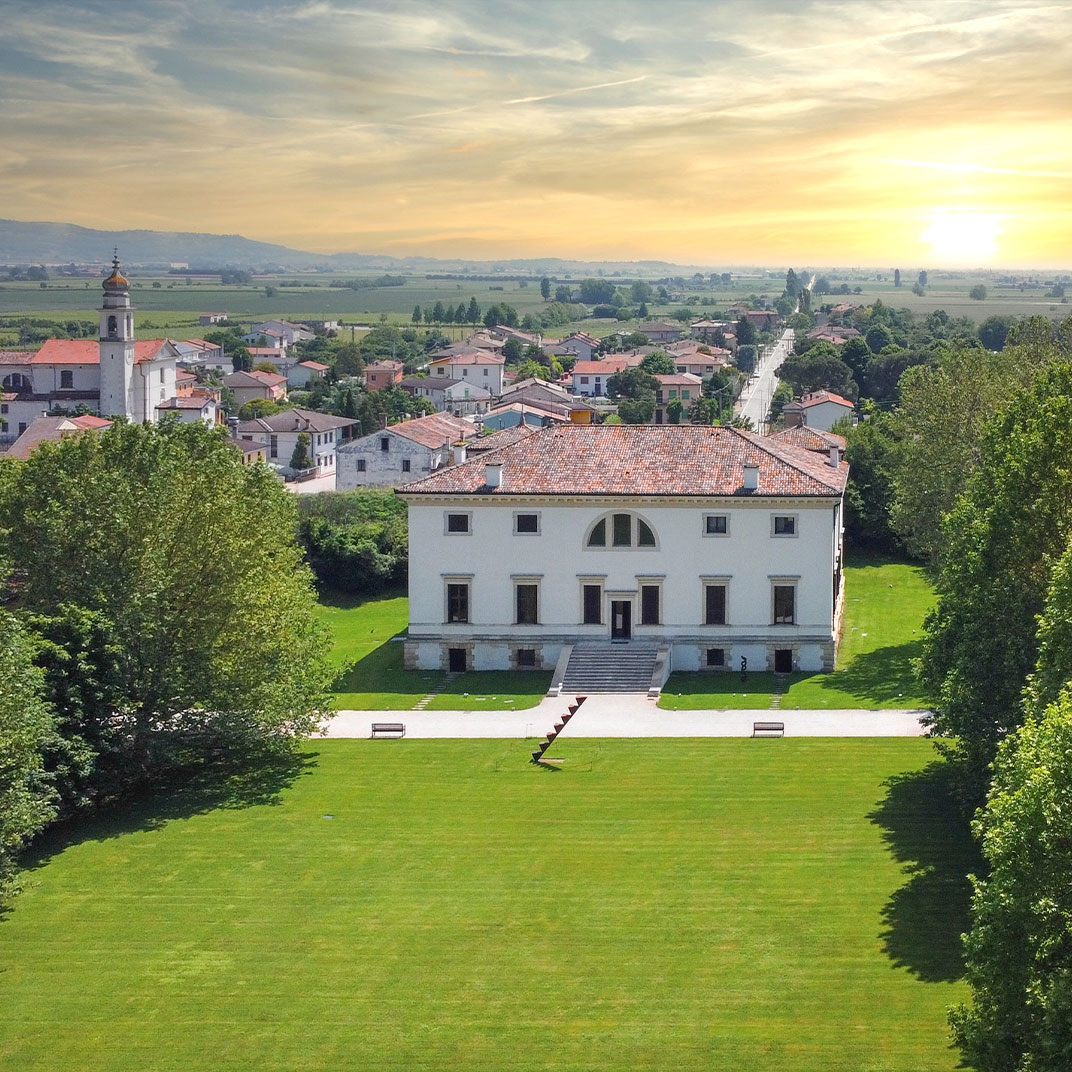
South of the city, the natural landscape of the Colli Berici hills rise subtly, scattered with vineyards, woods and sleepy hilltop villages that make for a beautiful drive. Still, what really draws the eye are the Ville Venete — refined country estates built by and for the Venetian aristocracy, often designed by Palladio himself. Some are open to visitors; others appear suddenly around a bend, half-hidden behind tall trees or stone walls.
The One-Key La Barchessa di Villa Pisani has, on its grounds, a villa designed by Andrea Palladio himself — while the rooms themselves are set in a 19th-century building constructed in the same style and meticulously restored, a mix of history and contemporary Italian design.
An hour northeast, in Maser, Villa Barbaro is another of Palladio’s masterpieces to seek out, where frescoes by his contemporary Paolo Veronese grace the interior walls.
NORTHWEST ESCAPES
Exalted towns and cities in the homeland of grappa.
An hour northwest of Venice, the hills get steeper and the views start to stretch. Asolo is a town of some 9,000 that feels more like a whispered secret than a destination, perched high and wrapped in what seems like a perennial golden light. Once home to poets — including 1906 Nobel Prize winner Giosuè Carducci, who called Asolo “the town with one hundred horizons” — as well sa royals, explorers, spies and exiles, it’s a place tinged with mystery and romance. Its high viewpoint, half-preserved castles, narrow cobbled streets and bars invite conversations that move at the rhythm of life here — slowly.
Stay at Hotel Villa Cipriani or Albergo Al Sole for two MICHELIN Guide hotels, both near The Guide’s selected restaurants in the town: La Terrazza and Locanda Baggio.
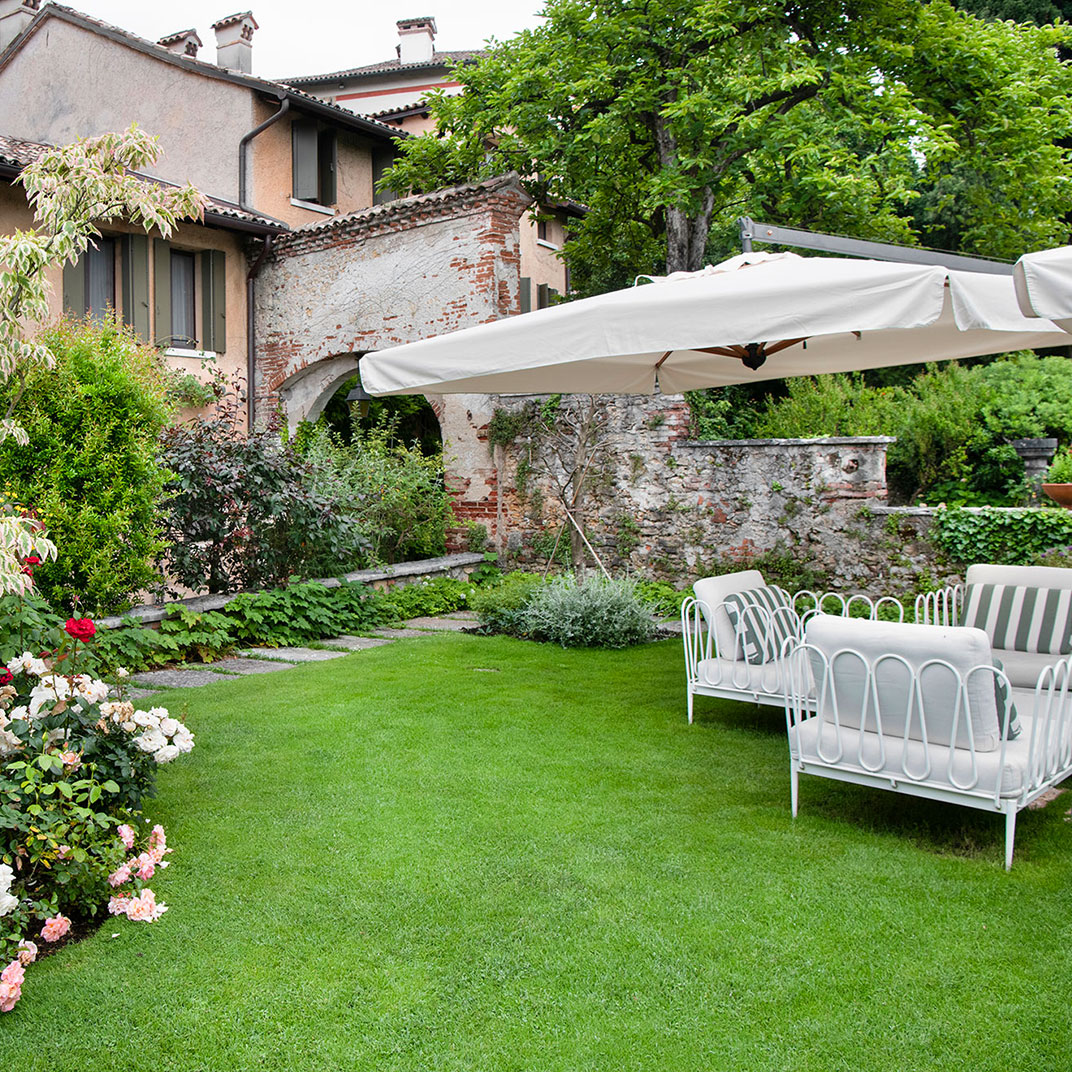
Continue west and the road winds to the mid-size city of Bassano del Grappa, with its iconic wooden bridge crossing over the Brenta River, its grappa-making (and grappa-drinking) heritage, and its penchant for painted ceramics. It’s a lively and hip city without being loud — a mix of mountain charm and the bustle of a well-to-do small city, now full of shops, cocktail bars, and stunning bookshops (see: Libreria Roberti). Enjoy seafood at Ca' 7 and Italian contemporary cuisine at Impronta.
Nearby, Marostica sits neatly behind its walls, famous for its cherries, its giant chessboard piazza, and for feeling, in the best way, like a set waiting for the next scene. Two traditional restaurants have been operating here for over a century, serving classic Italian dishes: La Rosina and the Bib Gourmand Osteria Madonnetta.
LAKE GARDA AND SURROUNDING
The trip wraps in beloved Lake Garda and the vineyard-wrapped towns near its shores.
If you follow this article from place to place by car, this would be the expansive finale. The city of Verona — second largest in the Veneto region to Venice and about an hour and 15 minutes away — greets you with open arms and open, palazzo-lined piazzas. It’s a city that combines the drama and romance of Shakespearean tales and opera with the history told by Roman stones, Paleochristian churches and Renaissance buildings.
Verona can feel polished and a bit precious, but few would deny the intrigue and fun to be had here, particularly if you take advantage of all the characterful spots to sip wine, taste gelato and stroll across the banks of the river that runs through the city. You’ll find no shortage of MICHELIN Guide restaurant selections in Verona, including the Three-Star Casa Perbellini 12 Apostoli and several One-Star restaurants. Hotels span from the Villa Cordevigo country estate to the Vista Verona in the old city center.
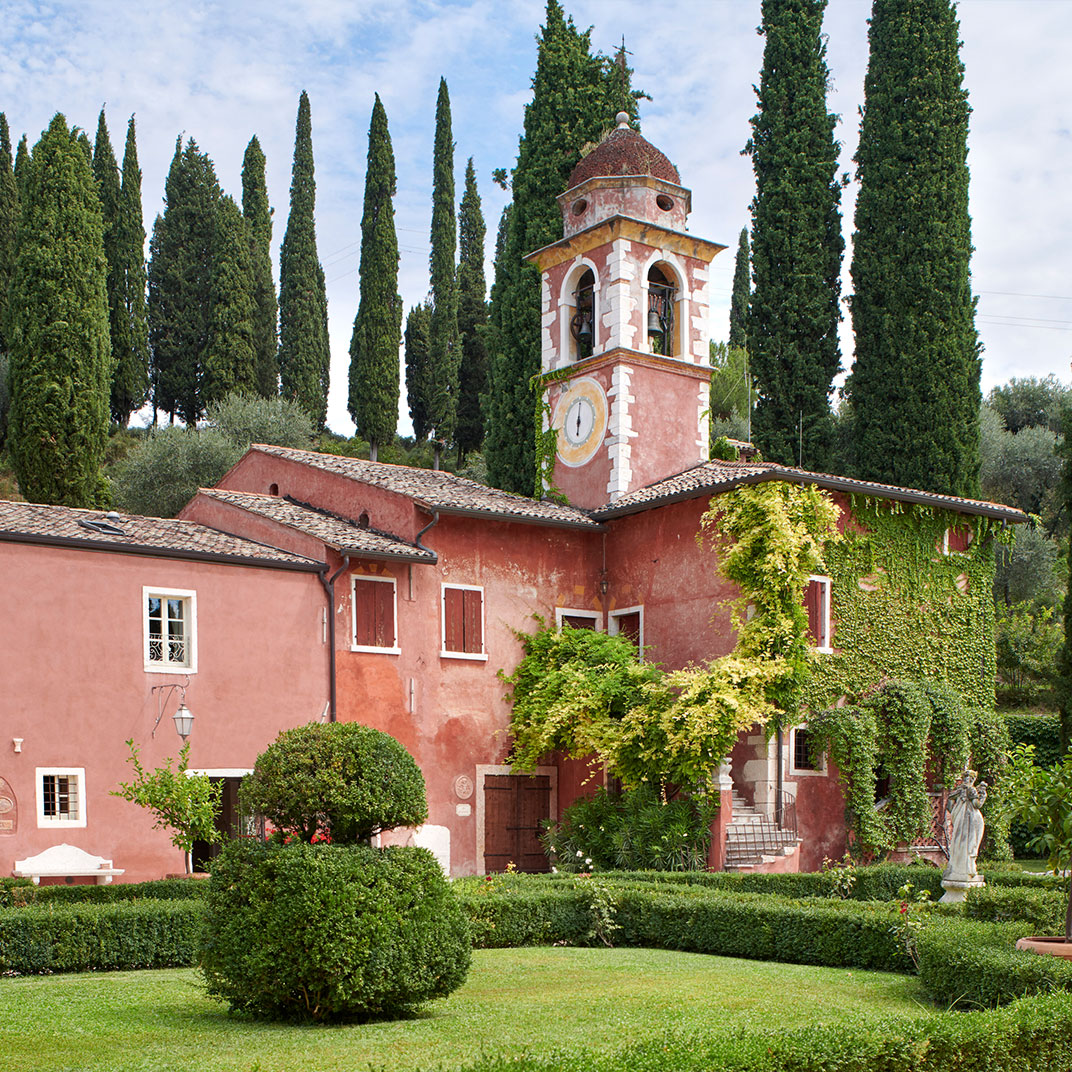
Drive east and you’ll reach Soave, a town of about 7,000 wrapped in vineyards and towered by medieval walls and castle. Here, white wine is the famous highlight, with a plethora of incredible producers practicing alchemy with the local grape variety, Garganega, into a wealth of vintages.
To the west, the slightly larger Negrar serves as the heart of the Valpolicella region — the place for Veneto reds par excellence, including Valpolicella Ripasso and Amarone. Stop here for the quiet beauty of the countryside, as well as cellar-hopping excursions and tastings that stretch into hearty dinners. For seafood, try Locanda '800. For Venetian, go for Bib Gourmand Trattoria alla Ruota.
Finally, just a little farther to the west and the country opens into Lake Garda. On the Veneto side, the lake shore is dotted with palm-fringed towns both eye-pleasing and historic, even if today they can lean a bit touristy.
Still, it’s the perfect finale: expansive and light-hearted, with restaurants and hotels dotted all along the waterfront and just enough tranquility to make you want to start the journey over again.
Related Articles:















